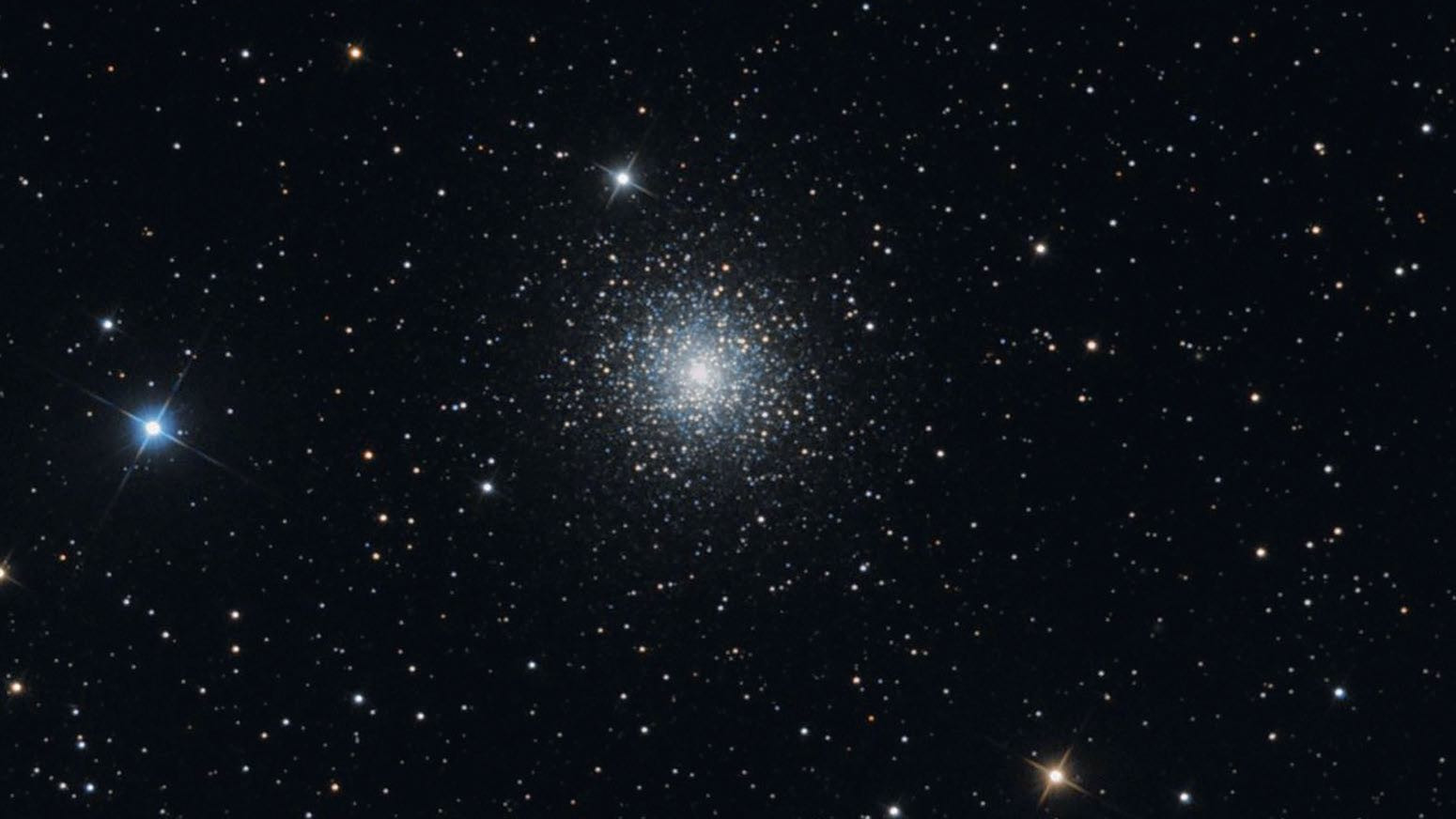Globular cluster M15
An attractive star field and a dense core surrounded by a halo: the perfect city object in the autumn sky has it all!
 Globular cluster M15 proves to be a real city object – not least because of its interesting surroundings. Markus Blauensteiner / CCD Guide
Globular cluster M15 proves to be a real city object – not least because of its interesting surroundings. Markus Blauensteiner / CCD GuideThe fact that, contrary to popular opinion, globular star clusters are also worthwhile observing targets for city astronomers, has already been demonstrated with the example of the Hercules cluster (M13). Another example of this is M15 in the constellation of Pegasus. At magnitude 6.4, this bright cluster is just as attractive as the classic objects M13 and M3, because it is located in attractive star-filled surroundings and has a dense, concentrated core surrounded by a foggy halo. All of this can be easily observed, even from a light-polluted location with a small telescope.
Astrophysically interesting
 Drawing of globular cluster M15. Oliver Stein
Drawing of globular cluster M15. Oliver SteinM15 is located about 39,000 light years away and is also remarkable from an astrophysical point of view: this globular cluster, whose brightest stars are 1,000 times more luminous than the Sun, is home to more than 130 variable stars, two Cepheid variables, two dwarf novae and eight pulsars. The starting point for a tour of this interesting object is ε Pegasi (Enif), the brightest star of the constellation, which is easy to find to the southwest of the striking Great Square of Pegasus. If, despite its brightness, you don't find Enif right away, you can also scan the eastern star field starting from Altair (α Aquilae). After panning around 30° you will arrive at Enif.
From Enif, a bright multiple star (mag. 2.5), which with its distant components (mag. 11.5, 82'', mag. 8.7, 144'') is itself a lovely observation target, then with low magnification (25×) continue around 4° further north-west through an area with relatively few stars to a prominent collection of magnitude 6 and 7 stars. A nearby round nebulous fleck is immediately visible in the field of view, quite small, but clearly two-dimensional, and definitely not a star: M15.
A real city object
We are looking at a nebulous area with a very bright core surrounded by a milky halo. You can comfortably increase the magnification to up to 140 times, the numerous surrounding stars serving quite well as a focussing aid. However, in contrast to M13 or M3, the dense concentration of stars barely allows individual members to be resolved, even using large optics with correspondingly high magnification. However, this does not detract from the visual appeal of M15 in any way. On the contrary: this globular cluster’s special beauty lies not so much in its structure, but much more in its setting, abundantly populated with stars.
M15 is definitely one of the most beautiful globular clusters that can be observed in the city night sky - a real city object.
 Finding chart for M15. J. Scholten
Finding chart for M15. J. ScholtenAuthor: Karl-Peter Julius / Licence: Oculum-Verlag GmbH
